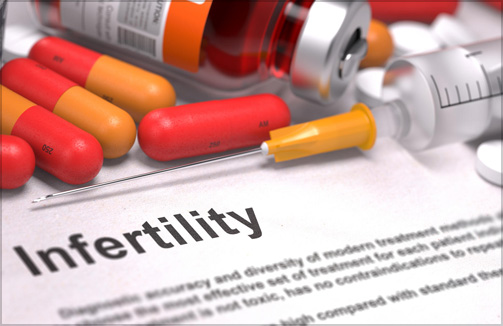Infertility refers to a condition where there is no pregnancy, even after one year of regular sexual intercourse. It covers a broad spectrum of conditions which can be minor or serious. Infertility related to men is initially investigated usually with a physical examination along with a discussion about past and present medical history. A physical exam determines the general health of both partners. The doctor will pay special attention to the outer sex organs as well as characteristics such as breast development and body hair in both partners to check for structural abnormalities or signs of possible hormone problems. The medical history gathers information that may suggest causes for infertility in each of the partners. Issues that will be discussed during the medical history apply to both the man and the woman.
The most common cause of male infertility is low sperm count or absence of sperm in the semen.
 Causes of low sperm count may include Causes of low sperm count may include
• Hormonal problems in the testicles or pituitary gland.
• Genetic factors.
• Testicular injury, infection or failure.
• Drug use.
Environmental factors including chemical pollution and exposure to radiation. Medical conditions such as a varicocele in the testicles, blockedejaculation due to a surgical vasectomy, absence or blockage of a vas deferens due to birth defect or infections (The vas deferens is a narrow, muscular tube that connects the testicles to the prostate gland), retrograde ejaculation (the ejaculation of semen into the bladder rather than out through the penis), Chromosomal problems.
Problem caused by the immune system after an infection, vasectomy or injury to the testicles. The man may develop, an auto-immune response in which his immune system treats his sperm as 'foreign' and produce antibodies against them.
Testing to determine the cause of infertility in men
There are number of test to establish the cause of infertility. The first tests are done to check the man's semen (Semen Analysis). A sample of semen may be analyzed to know the sperm count and quality of sperm. The Sperm mucus Penetration Test and the Sperm Penetration Assay (SPA) are used to test the sperm's function. Scanning of the reproductive organs to see if there is a physical abnormalities and blood or urine test to check the hormone levels are also done.
 Treatments Treatments
The treatments include drug therapy or possibly surgery to improve the situation. There is no effective treatment for lack of sperm. Low sperm count can be treated with artificial insemination or in vitro fertilization with partner or donor sperm. A testicular biopsy is done for men who have no sperm in the ejaculate to find out whether they have immature sperm in the testes. In vitro fertilization, intrauterine insemination, or gamete intra_fallopian transfer are done for reproduction in such cases. For retrograde ejaculation (the ejaculation of semen into the bladder rather than out through the penis), sperm may be recovered from the bladder, washed, and used for insemination. Surgery can be done to reverse a vasectomy or to repair enlarged veins in the scrotum (varicocele repair). Surgery also may be done to correct blockages or absence of the vas deferens.
Prevention
• Tobacco usage reduces sperm count so avoid smoking.
• Avoid exposure to chemicals and drugs.
• Excessive alcohol use may damage eggs or sperm, so keep it to the limit.
• Limit sexual partners and use condoms to reduce the risk of getting a sexually transmitted disease (STD). STDs that go undetected and untreated can damage the reproductive system and cause infertility.
• Maintain a body weight close to the ideal for your height to reduce the possibility of hormone imbalances. |